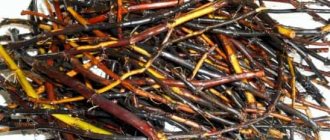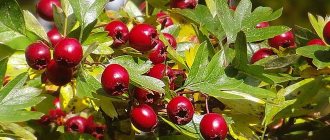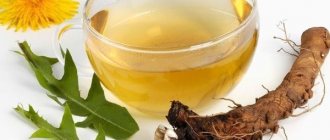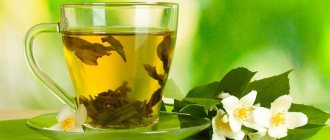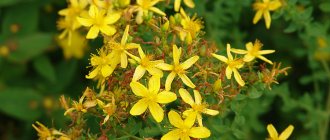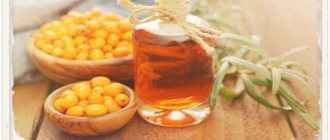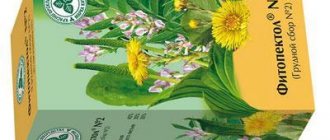The long-known beneficial properties and contraindications of yarrow are of interest to adherents of traditional healing methods.
With proper preparation of medicinal compositions, it is possible to alleviate the condition of a variety of diseases.
There is a similar article on this topic - Aloe vera: medicinal properties and contraindications.
Description of the plant
The herbaceous perennial yarrow - in Latin Achillea millefolium - is a member of the Asteraceae family.
This medicinal plant with a thin stem and thick creeping rhizome can reach a meter in height.
The characteristic name is due to the large number of pointed, doubly pinnately dissected elongated leaves, which are located along the entire length of the shoots.
Numerous miniature flowers are combined into baskets that form dense corymbose inflorescences. They can be observed throughout the summer. The herb yarrow has a specific, pronounced aroma.
The generic name - Achillea - was received in honor of Achilles, who used the plant to treat wounds. The species definition is millefolium, which translates as “thousand leaves.”
Yarrow (medicinal). Video:
Botanical description
Common yarrow is a member of the genus Achillea. He occupies his niche in the Astrov family. Asteraceae has its own specific name - Achillea millefolia, obtained due to the unusual shape of the leaf.
What does it look like
In fact, the number of leaves in the name is exaggerated and only visually it seems that there are an incredible number of them. Each elongated leaf consists of small sections, which gives volume to the plant. The leaf itself is quite large. Its length reaches 15 cm with a width of 3 cm and on the back side it is covered with a large number of oil glands.
The stems of the herbaceous crop mainly reach half a meter in height, but in nature sometimes upstarts up to a meter long are found.
The lush inflorescences of common yarrow are represented by small white or pink flowers - all together they form the shape of a basket.
It is worth noting that the plant is a honey plant. The intensely fragrant flower attracts bees.
The medicinal herb easily propagates vegetatively and by dropping seeds, the size of which varies from 1.5 to 2 mm. Since the yarrow root is fleshy, creeping and branched, growing it on the site is not difficult.
A riot of flowering can be observed from June to the end of August. From mid-summer to September, yarrow seeds ripen gradually, not simultaneously.
Where does it grow?
The herbaceous plant grows in forests, steppes, dry lands, and on the edges. It can be found in all regions of the country, most of Eurasia.
Yarrow: medicinal properties and contraindications
The benefits of yarrow are determined by its chemical composition. The above-ground part contains the following elements:
- flavones, which activate metabolic processes;
- coumarins, which have antitumor and antispasmodic properties;
- alkaloid achillein, which provides a hemostatic effect;
- tannins that have an astringent, cleansing, hemostatic, and anti-inflammatory effect;
- organic acids that regulate acid-base balance;
- inulin, which stabilizes the concentration of sugar and cholesterol, regulates carbohydrate metabolism, and prevents the formation of blood clots;
- bitter substances that help cure colds, get rid of harmful microorganisms, strengthen the immune system and the cardiovascular system;
- ascorbic acid, which restores elasticity to blood vessels, improves performance, regulates redox processes, and serves as a preventive measure for many diseases;
- resins that impart disinfecting, bactericidal, anti-inflammatory characteristics;
- choline, which maintains the integrity of the cell membrane, reduces cholesterol concentrations, and has an antidepressant effect;
- mineral salts necessary for the functioning of the body;
- carotene, which has antioxidant and immunomodulatory characteristics, helps improve vision;
- asparagine, necessary for the normal functioning of the nervous system;
- essential oil that has a positive effect on the endocrine and nervous systems, regulating water-salt balance;
- phylloquinone, which accelerates wound healing and prevents osteoporosis.
Yarrow seeds are rich in fatty oils, the concentration of which reaches 21%.
Since the benefits and harms of yarrow have been well studied, this plant is widely used in folk medicine for the following pathologies:
- kidney stone disease;
- stomach ulcer;
- anemia;
- gastritis;
- colitis;
- pulmonary tuberculosis;
- hypertension;
- gout;
- chronic liver diseases;
- malaria;
- cold;
- haemorrhoids;
- inflammation of the urinary tract;
- neuralgia;
- insomnia;
- rheumatism.
Dosage forms based on yarrow show a good effect for a variety of bleeding - uterine, hemorrhoidal, intestinal, nasal. They promote rapid healing of burns and boils.
The unique yarrow, the medicinal properties and contraindications of which are important to study before starting healing procedures, is used to prevent the formation of blood clots, strengthen vascular walls, and normalize metabolic processes.
Contraindications:
- individual intolerance;
- age up to 6 years;
- pregnancy;
- hypotension.
Monitoring your health is necessary if there is a tendency to develop blood clots, as well as with intense secretion of the gastric glands.
The presence of toxic aconitic acid requires caution in the use of any compositions with yarrow. Do not exceed the daily dosage and duration of the course.
If adverse reactions such as rash, dizziness, weakness occur, yarrow-based therapy is stopped.
Dosage forms
Valued for its many beneficial qualities, the yarrow plant is used in folk medicine to prepare the following medicinal products:
1. Fresh juice. Collect fresh grass. They grind it and squeeze out the juice. Combine with honey in equal parts to soften the bitter taste. Take for bleeding - 1.5 tbsp. l. three times a day.
2. Decoction. Pour 250 ml of water into an enamel pan. Add 1 tbsp. l. dry crushed yarrow. After boiling for ten minutes, cool the composition and filter. Take 50 ml three times a day.
A decoction of yarrow helps with blood loss, hemorrhoids, swelling, diarrhea, helminthic infestation, and insomnia.
Used to treat inflammatory diseases, neuralgia, headaches. The decoction is used to wipe the face to get rid of acne.
3. Infusion. Place dry raw materials - 2 tbsp. l. - in a thermos. Pour in 250 ml of boiling water. After an hour, the liquid is filtered.
Consume before breakfast, lunch, dinner - a third of a glass 30 minutes before.
It is recommended to take to relieve intestinal pain and eliminate the consequences of food poisoning. Wash wounds with infusion and gargle sore throat.
4. Tincture. Grind the dried herb thoroughly. Place 4 tbsp in a dry glass jar. l. raw materials. Pour in vodka - 100 ml.
Cover with a lid and keep for seven days in a dark cupboard. Strain using double gauze, squeezing out the solid fraction. Store in the refrigerator in a glass bottle with an airtight stopper.
For hepatitis, pyelonephritis, cholecystitis, take 20 drops three times a day. They practice treating acne, abrasions, ulcers, and wounds with tincture.
5. Ointment. Fresh inflorescences and leaves are ground in a mortar. Combine with Vaseline in a ratio of 1:4.
You can use rendered lard as a base. Used for application to bruises and boils.
6. Tea. In order to alleviate the condition during exacerbation of hemorrhoids, brew 1 tbsp. l. leaves in 0.5 liters of boiling water. Strained, drink throughout the day instead of tea.
Healing baths help get rid of eczema and scabies. Infuse 100 g of the dried aerial part in 2 liters of boiling water for 30 minutes. After filtering, pour into warm water. The procedure is carried out for 20 minutes.
Yarrow: recipes
There are many plant-based recipes. The basic cooking method is as follows:
- 15 grams of dry raw materials are placed in an enamel pan of a suitable size,
- pour 0.2 liters of hot water,
- cover with a porcelain saucer or lid and keep in a water bath for about 15 minutes,
- cool for half an hour to 45 minutes,
- filter through a sieve with a gauze cloth and squeeze out,
- bring the volume to 200 ml.
The liquid is drunk per day in 2-3 doses.
Another option is an infusion of fresh leaves, stems and flowers. For it, take 0.5 liters of water, pour in 15 grams of finely chopped raw materials and boil over low heat for 10 minutes. Remove the dishes from the heat, cool slowly, and filter the liquid. The drink is stored in a cool place for no more than 2 days. Take a tablespoon 3 times a day.
Alcohol tincture
To relieve external inflammation, get rid of bruises and abrasions, an alcohol tincture is prepared, which is lubricated on problem areas or applied in the form of applications. It is also taken orally to improve appetite, relieve menopausal symptoms and treat hemorrhoids.
It is prepared like this: pour 10 tablespoons or 40-50 grams of crushed dry grass into 500 ml of vodka, cover with a lid and leave in a dark place for 2 weeks. The resulting product is carefully filtered and taken 10-15 drops three times a day, adding to a small amount of water at room temperature.
Tea
It is believed that the freshly brewed drink prevents migraine attacks, relieves headaches and helps with hormonal disorders. It is prepared like regular tea or added to tea leaves.
For one glass of boiling water, take a teaspoon of the crushed mixture, place it in a porcelain teapot and leave for 5-7 minutes under a closed lid, covered with a napkin or terry towel. Drink warm or chilled, with honey or lemon. It is better not to brew tea for future use, but to prepare fresh tea before each use.
For hair
The herb can be an excellent remedy for strengthening hair, restoring its structure and getting rid of dandruff. It helps with weak and brittle hair, scalp problems and hair loss.
To prepare a rinse, take 30 grams of crushed leaves, stems and flowers, pour a liter of boiling water and leave for at least an hour. Even better, leave the mixture overnight and strain in the morning. The resulting liquid is moistened with the roots and strands along the entire length and left for about an hour. After this, the hair is rinsed with clean water.
Yarrow: how to take?
The plant is included in preparations for the treatment of diseases of the gastrointestinal tract, cardiovascular diseases, kidney diseases and urinary tract diseases. It is combined with nettle, calendula, St. John's wort, chamomile, and shepherd's purse.
Decoctions are taken before meals 2-3 times a day, half or one-third of a glass. Infusions – 1 tablespoon 2-3 times a day. The alcohol tincture is drunk by diluting 10-15 drops of the prepared product in 30-50 ml of clean water.
How to brew yarrow in a thermos?
For this purpose, it is advisable to take a thermos with a glass flask of a suitable size. A volume of 0.5 liters is suitable. The thermos is rinsed with hot water, 2 tablespoons of prepared raw materials are poured into it and boiling water is poured, leaving a small free space to the top. The container is screwed on or closed with a lid and left for an hour or overnight.
Benefits for women
It is mandatory to obtain a doctor’s permission to include yarrow-based medicinal forms in medical therapy.
Proper use of this medicinal plant is beneficial for women with the following pathological disorders of the body:
- Uterine bleeding. Grind fresh herbs and squeeze out the juice. Take 40 drops three times a day.
- Inflammatory pathologies of the uterus. Prepare an infusion by soaking 1 tbsp for an hour. l. chopped aerial parts in 300 ml of boiling water. After breakfast, lunch, and dinner, drink a third of a glass of filtered infusion.
- Irregular menstruation. Take dried grass and grind it. Dial 1 tbsp. l. raw materials are placed in a ceramic bowl. Pour in a glass of boiling water. After an hour, filter the infusion and drink 1 tbsp before meals at intervals of 6 hours. l.
- Stimulation of lactation. Pour 1.5 tbsp into an enamel pan. l. dry yarrow, having previously crushed the grass. Add 250 ml of water. Boil for 15 minutes. Cover the container with a napkin and leave for an hour. After filtration, add cooled boiling water to the original volume.
Yarrow. Application experience. Video:
Contraindications
Excessive consumption may lead to photosensitivity and allergic reactions.
If you are allergic to asteraceae, do not take yarrow internally or externally.
Pregnant women and nursing mothers should also avoid using yarrow, as this herb may cause miscarriage or adversely affect the unborn baby.
It is not recommended to take if you have increased blood clotting or a tendency to form blood clots.
In case of an overdose, headache, dizziness, and skin rashes appear.
Yarrow: beneficial properties and uses
Considering the variety of beneficial characteristics of yarrow, it is used after consultation with a doctor in therapeutic practice for certain diseases:
- Gastritis. Fresh grass is finely chopped. Place in a ceramic cup and pour 250 ml of boiling water, after 2 hours the infusion is filtered. It is recommended to consume 1 tbsp before breakfast, lunch, and dinner. l.
- Cystitis. Shred 1 tbsp. l. fresh grass. Boil in 250 ml of water on low heat for 10 minutes. Cover the container with a terry towel. After 30 minutes, filter the broth. Reception is carried out after meals every 6 hours.
- Enuresis. Pour crushed yarrow into a ceramic cup - 1 tbsp. l. Infuse for an hour in a glass of boiling water. After straining, the infusion is consumed after breakfast, lunch, and dinner, 1 tbsp. l.
- Stomatitis. Brew 2 tbsp with a glass of boiling water. spoons of grass. Keep under a napkin for an hour. Warm filtered infusion is used to rinse the mouth every 4 hours.
- Prostatitis. Yarrow benefits men. Most often it is prepared in the form of a tincture. You will need dry crushed grass - 30 g. It is kept for seven days in a glass of vodka. After filtering, take 40 drops three times a day.
Chemical composition
The beneficial properties of yarrow are explained by its structure. The largest accumulation of valuable substances was recorded during the flowering period.
The structure of culture includes:
- tannins, bitter substances, resins;
- flavones, alkaloids;
- aconitic acid;
- asparagine;
- inulin, choline;
- minerals;
- Vitamin C, Carotene.
The inflorescences and leaves of the plant are saturated with:
- camphor;
- cineol;
- tuol;
- carotene;
- sesquiterpenoids;
- acetic, formic, salicylic acids;
- vitamin K.
The active ingredients explain the wide possibilities and range of therapeutic effects, the pharmacological importance of the component. The composition of yarrow may differ slightly depending on the habitat of the crop.
Herbal infusions
Yarrow, popular in folk medicine, whose beneficial properties and use make it possible to treat many diseases, is often included in medicinal mixtures:
1. Combine yarrow, goldenrod, cherry stalks, and corn silk in equal parts. Pour a cup of boiling water over a teaspoon of raw materials.
In order to get rid of prostate adenoma, drink the product instead of tea in a warm form.
2. Add hop cones, horsetail, blueberry leaves, and red root to the chopped leaves of yarrow, bearberry and celandine. All components are taken in equal proportions.
In the evening, pour 10 grams of raw material into a thermos and pour in a glass of boiling water. In the morning, the infusion is filtered. To treat prostatitis, drink the medicinal liquid in small sips throughout the day.
3. Mix chamomile and yarrow inflorescences 1:3. Place 2 tbsp. l. raw materials in 1.5 liters of boiling water. Leave under a woolen scarf for 30 minutes. For acne, use the strained infusion for washing. You can use it to make lotions on wounds.
4. Make a medicinal mixture from yarrow with St. John's wort in equal volumes. Leave for 20 minutes, 1 tbsp. l. in a liter of boiling water. Drink as tea for liver pathologies and cholecystitis.
5. Grind 1 tbsp. l. dried yarrow and nettle foliage. Infuse under a terry cloth in 500 ml of boiling water for three hours.
It is recommended to drink the strained product during painful menstruation, 100 ml every 6 hours a week before menstruation and two days during discharge.
6. Dry the leaves of celandine and yarrow. Mix in equal volume fractions. Boil 1 tbsp. l. raw materials in 500 ml of water over low heat. When cooled, filter.
The decoction is recommended for the treatment of inflammation of the bladder and kidneys. Take 2 tbsp every 4 hours. l.
7. Prepare a mixture of mint and yarrow, taking dry ingredients in equal proportions. Dial 1 tbsp. l. and pour into an enamel bowl. Add 500 ml of boiling water and cover with a thick towel.
After 30 minutes, the infusion is filtered. Used to get rid of inflammatory diseases. Take 100 ml every 6 hours before meals.
Oregano (oregano): medicinal properties and contraindications. - there is more useful information here.
Indications for use of yarrow
The main properties of natural raw materials are antiseptic, strengthening, wound healing. Yarrow also provides a slight antispasmodic effect, relieves allergic reactions, and stimulates the body's immune abilities. The plant provides an anti-inflammatory effect.
Main indications for use:
1. Insufficient production of gastric juice.
The natural bitterness of the plant irritates the taste buds, which stimulates the synthesis of secretion.
2. Bloating and tenderness of the abdomen due to intestinal inflammation
, tension in the anterior abdominal wall, flatulence.
3. Spasms of the digestive tract.
The plant promotes the movement of bile into the duodenum. Expands the bile ducts by eliminating spasms, which increases the lumen of the channels.
4. Inflammation of the kidneys (in any form of development).
The antiseptic property of the plant allows you to deactivate the activity of pathogens and stop pyelonephritis. Yarrow affects bacteria. If the pathology is caused by fungal microflora, the use of the plant will not provide the expected effect.
5. Gastritis (inflammation of the stomach lining)
accompanied by high acidity.
6. Insufficient urine production (oliguria).
The symptom develops in response to inflammatory processes in the urogenital tract.
7. Intestinal infections caused by bacterial microorganisms.
This includes salmonellosis, giardiasis, and dysentery. Yarrow decoction is used as a supplement to the main treatment.
8. Inflammation of the bladder mucosa (cystitis)
, urinary incontinence.
9. Venereal diseases.
The development of sexually transmitted infections is characterized by the active production of genital secretions. Thanks to the use of yarrow decoctions, the amount of discharge is significantly reduced.
The plant of this type can cure skin diseases, excess weight, headaches, including migraines. Natural raw materials have benefits for the body of people suffering from atherosclerosis.
Yarrow is one of the few plants that is not only not prohibited, but is also useful to take for stomach and duodenal ulcers.
Yarrow decoction: use in gynecology
In the treatment of female diseases, it is used for douching and oral administration. A healing drink from whitehead helps with heavy bleeding, including uterine, painful and heavy periods. It promotes rapid healing of cervical erosion due to its antimicrobial and anti-inflammatory effect. In alternative medicine, this plant is often used to improve milk production in a nursing woman.
In the case of each disease, there may be different recipes for decoctions, but there is one that is considered universal. It is suitable for eliminating many gynecological problems. A decoction of yarrow is prepared as follows:
- Dry raw materials are poured into an enamel bowl at the rate of 20 grams of herb per glass of water and boiled until boiling.
- After this, the mixture is covered with a lid and simmered over low heat for another 30 minutes.
- Then it is infused for 2 hours, filtered and taken as directed.
But you need to remember that water decoctions cannot be stored for longer than 48 hours. It is best to prepare a new product each time.
Yarrow in cosmetology
The plant has long been used not only in folk medicine, but also for cosmetic purposes. The herb yarrow effectively copes with inflammation and rashes on the skin, stabilizes the activity of the sebaceous glands, removes peeling and irritation. It has a healing effect and helps saturate dermal cells with vitamins, so decoctions and infusions promote rejuvenation.
Yarrow fights inflammation and bacteria, so it can be used to cope with dandruff and seborrhea. Decoctions and infusions normalize the functioning of the sebaceous glands. Folk recipes are used to restore vitality to hair, strengthen curls and cope with dullness. Decoctions and infusions stop hair loss and promote protection.
Yarrow for hair
There are several recipes that can be used to care for your own hair, and the following options can be cited as examples:
- A decoction of yarrow for hair is prepared from 4 tbsp. spoons of raw materials and 500 ml of water. Boil the product for 5 minutes, and then leave for another 15 minutes. Rub it into your skin at night for two weeks. Another decoction can be used for rinsing after washing.
- An effective tincture of yarrow is for which three large spoons of raw material should be poured into 1/2 liter of vodka in a jar. Close and leave out of the sun to infuse for a couple of weeks. Strain and rub the finished product into your scalp a couple of times a week.
Yarrow for face
To obtain the benefits stated above, you must use the medicinal herb correctly:
- Lotion
. Pour 1 tbsp. spoon of raw materials 1 tbsp. boiled milk and leave for 30 minutes. After this, strain and pour into a glass bottle. Can be stored for no more than 5 days. Use yarrow for acne and other problems every day, rubbing the skin after slightly warming the product. - Tonic
. Prepare a regular decoction according to the classic recipe (1 tablespoon per 200 ml of water) and mix 100 ml with 5 ml of linseed oil and 3 drops of bergamot ether. Soak a cotton pad in the prepared product and wipe your skin with it after washing. Use twice a week, morning and evening.
Collection and procurement of raw materials
Medicinal mixture and other dosage forms, yarrow oil, can be purchased at the pharmacy, but many natural connoisseurs prefer to collect herbs themselves. Thus, there is no doubt that the places where the valuable ingredient is extracted are clean, and the plants themselves do not have additional impurities.
The collection of herbs begins at the beginning of summer in order to obtain components rich in benefits. Since the plant is a perennial, it is not recommended to pull it out by the roots. The value is the stem up to 15 cm long. It is worth paying attention to the leaves - the concentration of medicinal components is noticed in healthy, young greenery. When going “hunting”, you should arm yourself with pruning shears. Flowers are collected separately.
The harvested crop is scattered in a loose layer in a dry, well-ventilated place. It is important to prevent exposure of yarrow to sunlight and precipitation. The duration of the process depends on air humidity and ventilation. When the plant fragments crumble easily in your hands, drying is considered complete.
A properly dried collection can provide beneficial properties for up to 5 years, but their concentration will be lower every year. It is better to store the finished substance in paper bags in a dark, dry room or closet.
Common yarrow description
Achillea millefolium L.
Common yarrow grass is a perennial plant 15 - 80 cm high with a long creeping rhizome, single or several erect stems, bare or slightly pubescent, branched in the upper part, which end in beautiful corymbose inflorescences of white or less often pinkish color, formed from small flowers collected in small numerous baskets with tiled wrapping.
Yarrow leaves are oblong-lanceolate, up to 15 cm long, 1-3 cm wide, basal leaves with short petioles, the upper ones are sessile, alternate, dissected into numerous small lobules, hence the name “yarrow”.
It usually blooms in June - September; fruits, oblong silvery achenes 1.5 - 2 mm long, ripen in August - October, in one plant up to 25,000 achenes. It propagates by seeds dispersed by the wind, and new plants are formed from buds on the rhizome.
Common yarrow is a medicinal plant; yarrow grass is used for medicinal purposes by cutting off the upper part with inflorescences and leaves up to 15 cm long during active flowering in dry weather, as well as the roots. Yarrow inflorescences are also prepared, and fresh young leaves are also collected in May, when they first appear. Dry the grass by tying it into bunches, in the shade or in drying ovens at a temperature of 40°C. Dried grass is cut with garden shears and stored in a closed glass container for 2 - 3 years.
Yarrow herb contains essential oil - up to 0.8%, alkaloids achillein, betonitsin, stachydrine; organic acids, vitamins C, K, carotene (provitamin A); bitter and tannins, resins, trace elements.
Closely related species are also used and harvested for medicinal purposes: noble yarrow and Asian yarrow.
The scientific name of the genus Achillea is given in honor of Achilles, one of the famous heroes of the Trojan War, who knew how to heal and proved the healing power of yarrow by curing King Telephus from a wound inflicted by a spear. The memory of this is preserved and does not fade for three thousand years.
The name of the species millefolium, translated from Latin as “yarrow,” is associated with the strong dissection of the leaves. It is also called bloodgrass, whitecap, fragrant grass - the flowers and leaves have a strong bitter aroma.
What does it treat?
Yarrow decoction works well to stop internal bleeding; in addition, it has anti-inflammatory, choleretic, diaphoretic, antibacterial and hypoallergenic properties.
Positively affects organs such as: heart, liver, bladder, kidneys, musculoskeletal system, stomach and intestines. Strengthens the walls of blood vessels and capillaries, reduces the likelihood of varicose veins. Removes toxins and waste from the body, reduces high acidity of gastric juice.
Still, the main benefit of yarrow decoction is its ability to stop bleeding. It can stop both internal and external bleeding. Naturally, it is not able to heal severe bleeding and a wound, but it instantly stops vascular or capillary bleeding. The plant does not contribute to thrombosis penetration, so it can be used at any age. It is particularly useful for prolonged bleeding from a wound and bleeding after childbirth.
A decoction of the plant actively treats:
- tuberculosis;
- colitis, pancreatitis;
- diarrhea, flatulence, colic, ulcers;
- arthritis, rheumatism, gout;
- hypertension, headache, arrhythmia;
- Hemorrhoids and gynecological inflammations;
- ARVI, cystitis.
In addition, yarrow is actively used by women during menopause to relieve symptoms in a complex treatment, as well as a decoction of the herb - a diaphoretic, sedative, for pinworms and helminths, for insomnia and to enhance lactation.
Yarrow is a valuable plant with many medicinal properties. You can find it in every garden, and its benefits are undeniable and invaluable for human health.
Contraindications for the use of yarrow tea
Despite its endless beneficial properties, yarrow tea has its contraindications. First of all, it should not be used by women during pregnancy. This tea can cause spontaneous miscarriage. In addition, if yarrow tea is used for too long, allergic reactions (skin rashes) may occur.
Therefore, treatment should be carried out in courses: treat for ten days, then take a break for 5 days. And observe the measure, that is, take no more than one glass per day. The exception is colds and ARVI, when you can use a glass of healing tea 3-4 times a day. But no more than 4 days. And further. Every time we plan to self-medicate, it would be a good idea to consult a doctor.
Contraindications and restrictions
When practicing treatment, the possible harm of yarrow is taken into account, since there are contraindications to taking products prepared on the basis of this herb:
- pregnancy;
- complicated gastritis;
- exacerbation of peptic ulcer;
- individual intolerance.
Caution is required for thrombophlebitis, low blood pressure, and high acidity.
Comply with the requirements reflected in the prescription, do not exceed the recommended dosage and course duration. Do not give yarrow to children under 6 years of age.
The unique medicinal qualities of yarrow are attractive due to its ease of use and availability of raw materials.
But in any situation, self-medication is unacceptable. It is advisable to obtain prior medical permission to use a specific yarrow-based recipe.
When to use
The medicinal properties of the herb and the ability to quickly and gently affect the body without side effects allow the use of yarrow decoction in the treatment of children over 12 years of age and the elderly. Doctors recommend yarrow decoction for the following diseases and conditions of the body:
- peptic ulcer of the stomach and duodenum;
- ulcerative colitis;
- dysentery;
- liver diseases;
- kidney disease;
- fibroids;
- any bleeding;
- bronchiectasis.
The medicinal decoction and juice of the plant can be used once (to relieve spasms or stop bleeding) or undergo a course of herbal medicine. Medicinal forms are taken several times a day, used as an additional component, without abandoning the main treatment recommended by the doctor.
To prepare a ready-to-use medicinal product, you need to take fresh juice or dry crushed raw materials. Fresh juice is obtained by squeezing crushed herbal mass, which can be made using a meat grinder or blender.
Fresh juice is used to treat ulcers, abrasions, cuts and scrapes.
In gynecology, bleeding cervical erosions are treated with tampons with juice. For nosebleeds, a tampon soaked in juice is inserted into the nostrils to speed up the closure of the vessel.
The resulting juice can be diluted with honey in a 1:1 ratio and the mixture can be consumed 1 teaspoon three times a day as a general tonic for diseases of the blood and hematopoietic organs.
Juice with honey is useful for improving metabolism in liver diseases.
The juice can be mixed in a 1:1 ratio with sea buckthorn or olive oil and used internally for medicinal purposes for gastritis and gastric ulcers.
Mixtures of plant juice with essential oils of tea tree or coniferous trees are an excellent remedy for improving the regeneration processes of long-term non-healing wounds of various etiologies. This mixture can be used to treat bedsores, fistulas and trophic ulcers.
Medicinal decoctions are prepared as follows. A tablespoon of raw material is poured with 200 ml of warm water and boiled for 15 minutes. Then infuse for an hour, filter and bring to the original volume. The resulting decoction is taken regardless of meals, 3 times a day, a tablespoon, without exceeding the dose.
The finished decoction is useful for:
- washing bleeding wounds;
- mouth rinses for bleeding gums;
- improving skin condition in case of skin diseases;
- cessation of the symptoms of metrorrhagia observed in some women during childbearing age and after menopause;
- treatment of menstrual disorders;
- improving lactation in nursing women;
- relieving colic of various etiologies;
- reducing symptoms during exacerbation of cholelithiasis or urolithiasis.
Taking a decoction during this period significantly alleviates the course of the disease. When using yarrow preparations, you need to remember that long-term use of drugs based on it leads to side effects.
Who is tea harmful for?
As already mentioned, it is better to abstain and not drink yarrow during pregnancy, especially in the early stages. People prone to allergies should not get carried away with the drink - yarrow can lead to rashes.
It is important to remember that this medicinal decoction of yarrow can only be drunk for 10 days in a row, and then you should take a break. The herb is very powerful in its properties, and it must be taken strictly as a medicine, in courses. And even if you have a strong desire to drink herbal tea, it is better to drink only three small cups (this dose is recommended during a cold).
Spreading
The plant is distributed throughout almost the entire territory of Eurasia and has been introduced to other continents. It is found everywhere in our country, except in Arctic deserts. Prefers forested upland meadows, thickets of open forests, bushes, forest edges, meadow steppes, abandoned fields, landfills, wastelands, ravines, banks of reservoirs, roadsides, etc.
Decoction in medicine
To prepare a decoction from this plant, you need to take one tablespoon of finely chopped herb, pour 250 milliliters of hot water into it, and then put it on low heat and bring to a boil. After this, remove the finished product from the heat, leave it in a dark place for half an hour, and then strain through several layers of gauze. In official medicine, such a decoction is prescribed for diabetes mellitus and as a means of weight loss. It is taken three times a day after meals, 0.1 liter.
Yarrow collection
For medicinal purposes, as a rule, both the flowers and the grass of this plant are harvested. The grass should be collected strictly during the flowering phase, cutting off the very tops of the shoots with convenient scissors. Their length should not exceed 15 centimeters. But rough, hard, leafless bases should not get there. And the inflorescences should be cut no more than 2 centimeters. To make your work easier, you can simply mow the area of grass where the yarrow was found, and then select the necessary plants from the pile.
It is recommended to dry the collected raw materials in the open air, but at the same time protecting them from rain. For example, an attic is perfect for this purpose. The drying layer should not exceed 7 centimeters. The condition of the grass will need to be monitored throughout the drying process and turned over periodically. The shelf life of this natural medicine is 24 months.
Yarrow essential oil
This healing agent is used both internally and externally. Many people try to make the essential oil in question at home, although in reality it is a very labor-intensive process that will require a huge amount of raw materials and effort. Therefore, it is best to buy such a product at a pharmacy. Today it is freely sold in almost any of them. The main thing is to make sure that the packaging indicates that this is 100 percent essential oil, and not a healing mixture with many additives. Only in this case will it be possible to purchase a truly useful natural product.
Compound
Millennium is rightfully considered a powerful medicinal plant. Its benefits are due to its complex chemical composition:
- organic acids;
- amino acids;
- tannins;
- natural essential oils;
- resins;
- B vitamins;
- polysaccharides.
And this is not a complete list. The plant is rich in vitamins, macro- and microelements. The seeds contain almost 20% healthy fatty oil. The presence of a large number of biologically active substances with beneficial and medicinal properties has made yarrow an indispensable component in the arsenal of traditional healers. It combines benefits and harm, but we will talk about this below.
How to brew yarrow tea?
Pour 1 teaspoon of dried raw materials (mixed) with a glass of boiling water, boil for 1 minute and let steep for 10 minutes. Instead of sugar, you can add a little honey, and lemon for flavor.
Yarrow herb tea is very useful as a preventive measure. To prepare it, take 2 teaspoons of the herb, pour 1 glass of boiling water, leave for 15 minutes. Drink warm. You can drink 2-3 cups of this tea every day. For gastrointestinal problems, it is good to add peppermint and chamomile to this tea.

